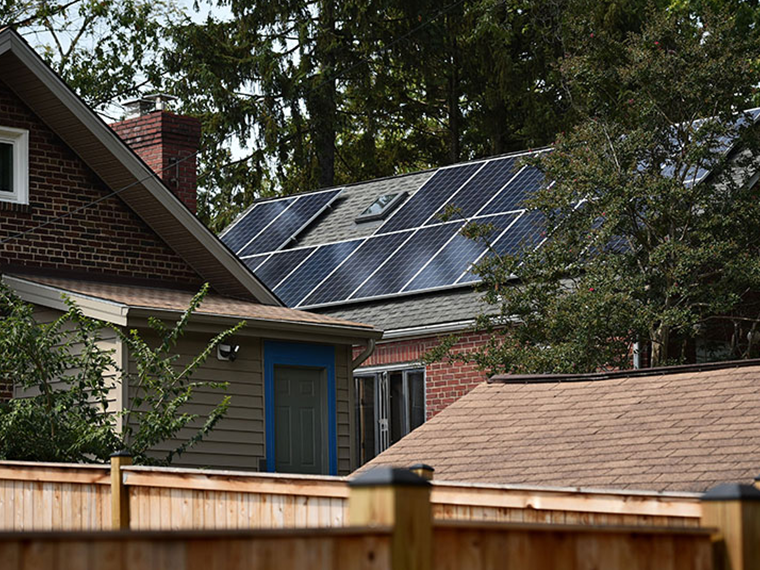In a challenging time, collecting and analyzing actual performance data become even more crucial
To those following the news, this may seem an odd moment for a progress report on the most influential U.S. companies’ tracking and disclosing of climate-related data. After all, President Trump has vowed to reinvigorate the U.S. coal industry, unleash new sources of carbon-emitting oil and gas, and the Environmental Protection Agency has moved to eliminate requirements that companies track their emissions.
It seems like the opposite of progress. But the effort to slow down and eventually halt the growth of carbon dioxide and other greenhouse gases in our atmosphere, and thus stave off widespread and destructive climate change, is a decadeslong project and will most certainly endure cycles of political favor and opposition. Gathering and analyzing data, regardless of these cycles, is crucial to building understanding of the threat and to making progress at containing it.
Opt In to the Review Monthly Email Update.
Early in May 2025, Bill Gates suggested that the current pushback against efforts to fight climate change will ebb, if not immediately, given the scale and scope of international investment and commitment to addressing the crisis. And some important players are stepping into roles the current U.S. government wants to abandon; notably the American Geophysical Union and the American Meteorological Society said they would publish the flagship climate assessment that 400 fired government scientists had been preparing.
Progress on Disclosures
So, in the corner of climate disclosure we at the UCLA Center for Impact have sought to occupy, like in so many others, work goes on. Companies comprising the Stanford & Poor’s 500 Index made some impressive strides in their levels of disclosure.
- Those disclosing their Scope 1 greenhouse gas emissions rose to 89.5%, for year-end 2023, up from 82.8% a year earlier.
- Scope 2 disclosures rose to 88.7% from 80.8%.
- And disclosures of Scope 3 — emissions that occur elsewhere in a company’s supply chain but that represent the majority of greenhouse gases involved in their businesses — lag still, but rose to 69.8% from 56.4% a year earlier.
If climate change were a slow-moving crisis, the progress would seem more impressive, of course. In the wake of destructive wildfires, floods, hurricanes and punishing heat, clearly we need to speed up on all fronts. Also, standardization in these disclosures is currently spotty and that undermines the utility of the data; much work to be done there.
More data is below. Before that, though, we should explain why — with all the climate change-related information that’s out there — we choose to track the levels of S&P 500 disclosure. Simply put, because of their standing in the most-widely-invested-in and followed index, these companies are influential. Managements of other companies, envying inclusion in the index, follow what these firms do and often emulate it. What’s more, the intense investor interest directed at S&P 500 companies means they face a barrage of influential external voices trying to persuade these companies to act in various ways, including to reduce emissions of greenhouse gases. We believe they’re an important leading indicator of progress.
How our work, and that of many others gathering and analyzing climate data, fits into the overall picture is yet to be determined. The hierarchy of climate data — other than the concentration of CO2 in the atmosphere, measured at Mauna Loa Observatory and known as the Keeling Curve — is constantly in flux, as thousands of researchers and others grapple with myriad sources of greenhouse gases and how they’re generated, detected, monitored and, at times, contained. We make our data and analysis free to all and opine on the difference between good climate data and that which can be called greenwashing in hopes of speeding progress.
Not every government, it should be noted, is sounding the retreat on disclosures around climate change. Notably, California — via Senate Bills 253 and 261 — and the European Union are global leaders in the movement. Many if not most S&P 500 companies are doing business in California and in EU countries.
EU Corporate Sustainability Reporting Directive, 2023, expands mandatory sustainability reporting to about 50,000 companies and applies “double materiality,” a standard that broadens required disclosure beyond finances of the company to impacts on stakeholders and society. It phases in from 2024 onward.
Mandated Climate Reporting: India, Brazil, Hong Kong, Japan, New Zealand, Singapore, Switzerland and the United Kingdom require — or are in the process of requiring — climate disclosures, many aligned with guidelines from the Task Force on Climate Related Financial Disclosures
By the Numbers
Other data:
- Among the S&P 500 companies, those adopting a net zero or carbon neutrality target for Scope 1 showed a tiny increase, 283 companies in 2023 vs. 281 the prior year. For Scope 2, roughly the same: 275 companies, up from 273. Better progress in Scope 3: 150 companies vs. 119 the prior year.
- Investors want to know how climate change might pose risks to a business. Disclosures in this area are far from uniform, and the leading framework for these disclosures is in flux. In 2023, 69.6% of S&P 500 firms disclosed climate-related risks in line with guidelines established by the Task Force on Climate-Related Financial Disclosures, down from 76% the prior year. The task force is disbanding, and the work is being taken up by another body.
- Are companies planning for the transition to reduced greenhouse gas emissions and the risks of operating thusly and in a climate-changed environment? In no industry in the S&P 500 do the majority of companies have a disclosed transition plan. Utilities, regulated on these and other matters by state public utility commissions, are most likely to have a disclosed plan, at 38.7%, followed by materials industry players, at 38.5%. In the emissions-heavy energy sector, just 21.7% of companies have a disclosed transition plan. Goldman Sachs has developed a Climate Transition Tool to evaluate other companies’ transparency but has not published a transition plan for itself.
- At the intersection of corporate governance and climate change preparedness, 48% of companies with a transition plan don’t say who’s responsible — by name or title — for its implementation or oversight; 30% say management handles those tasks, and just 22% say the board of directors or a board committee does the work.
- Of some 4,644 individuals who served on S&P 500 company boards in 2023, 9.7% were identified as having environmental competencies — expertise or education in fields such as climate change, renewable energy, ESG, environmental policy or sustainable innovation. Board representation in these areas is strongest in the utilities, energy and materials industries.
Featured Faculty
-
Magali Delmas
Professor of Management; Faculty Director, Impact@Anderson
- Delaney X. Buskard
-
Jiaxin Li
Strategy, Ph.D. candidate
-
Tyson Timmer
Institute of the Environment and Sustainability, Ph. D. candidate
About the Research
Delmas, M. A., Clark, K., Timmer, T., & McClellan, M. (2025). The state of corporate sustainability disclosure.







